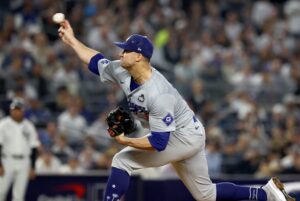While empty stadiums across the 2020 MLB campaign may seem unappealing to players and fans, it may end up being a financial benefit to one particular team.
It’s no surprise that the Miami Marlins were basement dwellers last season (57-105). It wasn’t just on the field where the Marlins floundered but in the seats as well. Among recording the third-worst record in 2019, Miami recorded the lowest average fan attendance across all 30 MLB squads. That meant averaging a mere 10,016 fans per home game, a full 4,536 below Tampa Bay Rays who ranks second to last. The Marlins were in fact, the only team to not touch up a million or more fans total in 2019.
When the 2020 season starts back up, it will do so with empty stadiums which for the majority of teams could be detrimental. While the Marlins may not be successful in a postseason run, they could be successful financially. Owners have said that the loss of fans could cut into proceeds by an average of $640,000 per game, although they have failed to present information to fully support that.
The Marlins themselves brought in roughly $500,000 per home game in 2019. That’s with tickets available for all 36,742 seats in Marlins Park. With the estimated cost of running a ballpark at $300,000, it’s possible that the Marlins could come out on top without fans coming through their doors. NL East rival the Atlanta Braves presented quite the opposite, averaging 32,779 per home contest. Miami matched 31 percent of that mark in attendance in 2019. Putting that towards Atlanta’s $2.1 million per home game revenue from fans, the Marlins hauled in only $644,000.
Miami’s average ticket price (not including premium seating and luxury suites) was $22.55. Apply that to the adjusted revenue figure and Miami could be looking at a profit of potentially $200,000. Of course, Miami will be without the financial help of MLB’s revenue sharing.
The Play Vs the Price
Even if the Miami Marlins come out on top financially, the play on the field may be a little different. There is seemingly more excitement for Miami’s 2020 campaign with 18 members of the teams’ initial 60-man player pool new to the organization. Those 18 individuals also bring a bounty of major league experience.
While financial positives might come from no fans, the Marlins on the field may not. Dating back through the 2018 season, looking at the 60 lowest-attended games (7,751 or less), all 60 took place (unsurprisingly) within the confines of Marlins Park according to numbers by baseballreference.com and Statista. Despite the comforts of home, Miami posted a winning percentage of 36.7 percent. Within those games, the Marlins averaged just under four runs scored and nearly five runs allowed per game. The Marlins were 22-38 through those games. In all other games (263), Miami had a winning mark of .373 while averaging 3.7 runs scored, and 5.1 runs allowed.
It’s also been no secret that Miami hasn’t fared out too well against other NL East teams in general. When taking a look at that 60 game span with the lowest attendance totals, the Marlins posted a record of 3-18. The worst records were against New York (0-7) and Washington (0-6). Their only record above .500 was against the Phillies (3-2).
The interesting aspect within that is if you remove all NL East games from that list, the Fish were roughly a .500 ball club. Within reality, however, the Marlins floundered and things aren’t going to get any easier this season. Miami will have to play two-thirds of their games against their divisional opponents.
Of course, with the experience brought in and the potential success from top prospects, the Miami Marlins could turn the tables completely. They have a projected playoff chance of 6.9 percent according to PECOTA, but it’s enough to top the San Francisco Giants, Pittsburgh Pirates, Seattle Mariners, Texas Rangers, Kansas City Royals, Detroit Tigers, and Baltimore Orioles, all while exciting a fan base starving for success.
Main Image
Embed from Getty Images






